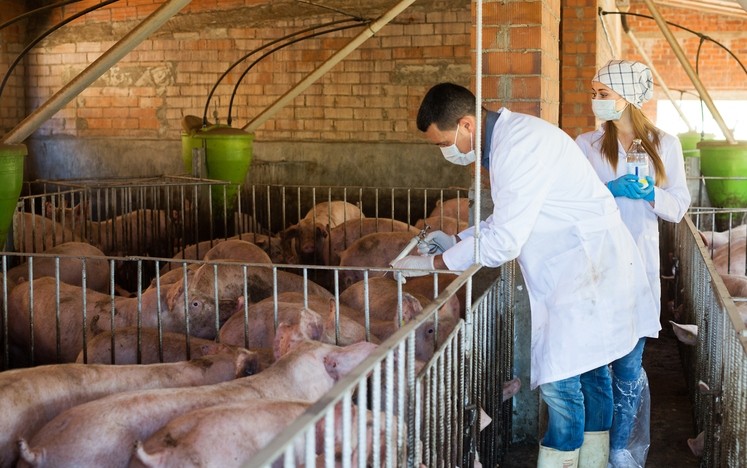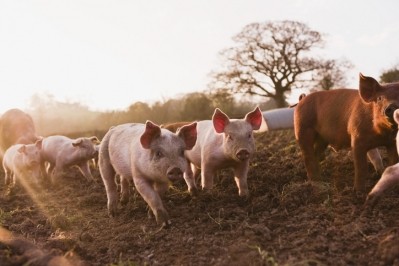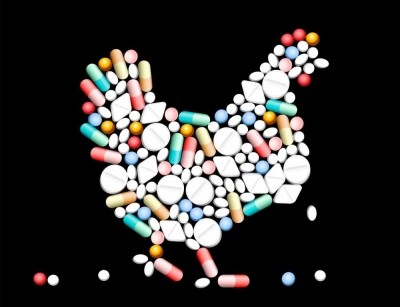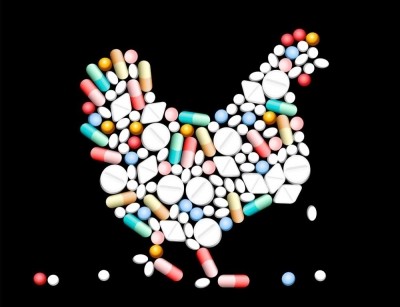Three major UK supermarkets publish antibiotic usage data

M&S supplies relatively low volumes of pork compared with the biggest retailers; it said it decided to publish the data as part of its Plan A 2025 commitment to be a leader in transparency.
The data, which was published on M&S's website, shows its pork suppliers used 41mg/PCU (antibiotic use in mg of active per kg of Population Correction Unit) of antibiotics in 2015 and 2016, compared with overall industry usage of 183mg/PCU and the 2020 industry usage target of 99mg/PCU.
Usage in chicken was 2.5mg/PCU in 2016, compared with an industry average of 17mg/PCU and, in dairy, the 2016 figure was 13mg/PCU, half the industry average.
Waitrose, which had been planning to publish its figures in early 2018, instead released the information before Christmas. Its data showed its pig farms used 50-75mg/PCU of antibiotics in 2016, with other sectors are also well below industry averages.
That retailer said it was working with its suppliers to develop strategies to reduce overall use, while “keeping animal welfare at the forefront of any decisions.”
ASDA, subsequently, also published its data - its figures also showed low usage of antibiotics in its supply chain, although the data did not include pig data, which the retailer said was still being collated.
“Antibiotics should be used responsibly in farm animals. We do not support the routine preventative use of antibiotics,” said ASDA.
Campaigners call on other UK retailers to act
Cóilín Nunan of the UK group, Alliance to Save Our Antibiotics, said it welcomed the move and it called for other supermarkets to do the same.
“We want to see all supermarkets increase transparency for consumers by publishing similar data. Several other supermarkets have already collected data, but are so far refusing to publish it.”
“M&S data covers only pig, chicken and dairy farming, but shows that their pig and chicken farmers are using less than one quarter of UK averages.
“Waitrose data is much more comprehensive, additionally covering beef cattle, lamb, turkeys, ducks, egg production and farmed fish. Antibiotic use in Waitrose’s pig and chicken suppliers is about one third or less of the industry averages, and use in turkeys is about one sixth of the average.
“ASDA already has a small amount of data on antibiotic use by farming system, but we hope that in the future it will be publishing a lot more data on this, so that consumers can compare free-range and organic, with indoor and more intensive farming systems."
Nunan said the publication of this data should help drive average use across the farming industry down, as it illustrates the extent to which many other producers are still overusing antibiotics, despite recent cuts.
“We are also calling for all supermarkets to publish antibiotic-use data by farming system, so that consumers can compare free-range and organic farming with indoor farming and intensive systems.”
Drop in sales of antibiotics
A report from the UK’s Department for Environment, Food & Rural Affairs (Defra) published in October last year showed sales of antibiotics for use in animals in the UK have fallen to their lowest level since records began.
Such sales dropped by 27%, from 62 mg/kg in 2014 to 45mg/kg in 2016, surpassing a government target of 50 mg/kg set following recommendations in the 2016 O’Neill Review.
As well as the overall reduction, the report shows a further drop in sales of the highest priority antibiotics that are critically important for humans. Sales of these accounted for less than 1% of all antibiotics sold for use in animals in 2016. This included an 83% reduction in the use of Colistin, an antibiotic of last resort for use in people.








